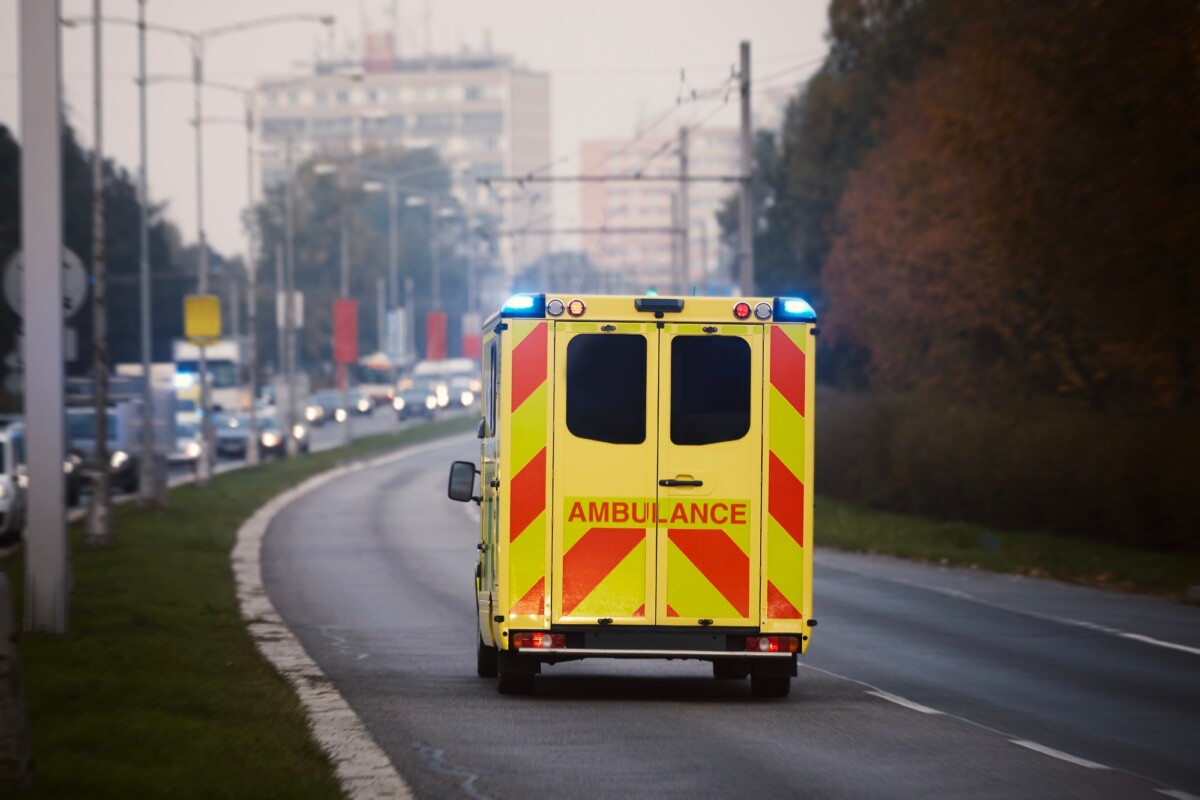Motor Vehicle Accident Emergency Response Plan – Fast, Safe Action

In the aftermath of a motor vehicle accident emergency response plan can be crucial. This plan ensures timely and effective action, potentially saving lives and reducing injuries.
Understanding the Importance of a Motor Vehicle Accident Emergency Response Plan
The Role of Preparedness in Emergency Situations
Why Preparation Matters
Being prepared can significantly impact outcomes. Key reasons include:
- Quick Response: A defined plan allows for swift action.
- Resource Allocation: Knowing whom to contact saves time.
- Injury Mitigation: Immediate action can lessen injury severity, with timely medical intervention reducing death risk by up to 25%.
Key Components of an Effective Response Plan
Essential Elements to Include
An effective plan should include:
- Contact Information: Easily accessible emergency numbers.
- First Aid Training: Regular training for drivers and passengers.
- Communication Protocols: Clear channels among all parties involved.
The Impact of a Response Plan on Recovery
Long-Term Benefits
A motor vehicle accident emergency response plan leads to better recovery outcomes, including:
- Reduced Stress: Alleviates panic during emergencies.
- Legal Preparedness: Aids in accurate incident documentation.
- Community Awareness: Enhances overall safety.
In summary, such a plan is vital for preparedness and safety on the roads.
Key Components of an Effective Emergency Response Plan
In the event of a motor vehicle accident, a well-structured emergency response plan is essential for ensuring safety and managing the aftermath effectively. This plan minimizes injuries, protects evidence, and facilitates recovery for all involved. Here are the key components of an effective emergency response plan:
1. Immediate Response Procedures
- Assess the Situation: Evaluate the scene for hazards.
- Call for Help: Contact emergency services right away.
- Provide First Aid: Administer first aid if safe to do so.
Timely medical intervention can significantly reduce injury severity, according to the NHTSA.
2. Communication Protocols
- Establish a Chain of Command: Designate who communicates with emergency services.
- Use Clear Language: Ensure all team members understand their roles.
- Keep Records: Document all actions taken during the incident.
Effective communication is crucial, as miscommunication can delay care and increase risks, according to the American College of Emergency Physicians.
3. Training and Drills
- Regular Training Sessions: Conduct training on emergency procedures.
- Simulated Drills: Organize mock scenarios to practice responses.
- Review and Revise: Gather feedback to improve the plan.
Regular training, as recommended by FEMA, builds confidence and prepares responders for real-life situations.
Training and Preparedness for Emergency Responders
Having a solid emergency response plan is crucial for effectively responding to motor vehicle accidents. This plan outlines essential steps and ensures that responders are prepared to handle emergencies, potentially making the difference between life and death.
Understanding the Basics of Emergency Response
- Emergency responders must be trained in basic first aid and CPR.
- Familiarity with local traffic laws and accident protocols is essential.
- Regular drills help reinforce skills.
Training is vital for responders to assess scenes, provide care, and coordinate with emergency services. According to the NHTSA, proper training can significantly reduce response times and improve victim outcomes.
Continuous Education and Skill Enhancement
- Ongoing training sessions should occur quarterly.
- New techniques should be integrated into training.
- Collaboration with local hospitals can provide insights.
Continuous education keeps responders updated on best practices.
Mental Preparedness and Resilience
- Mental health support is crucial for responders.
- Stress management techniques can enhance performance.
- Peer support fosters community resilience.
Mental preparedness is essential, as it helps responders cope with job stresses, leading to better performance and lower burnout rates.
Communication Strategies During a Motor Vehicle Accident
In the event of a motor vehicle accident, a well-structured motor vehicle accident emergency response plan is essential. This plan outlines immediate actions and emphasizes effective communication among all parties, which can significantly reduce confusion and save lives.
Effective communication is crucial during emergencies. Here are key strategies to enhance communication:
Utilizing Technology
- Mobile Apps: Use emergency response apps for quick accident reporting.
- GPS Tracking: Provide precise locations to emergency services.
Technology plays a vital role in facilitating quick reporting and ensuring timely assistance.
Establishing Clear Roles
- Designate a Communicator: Assign someone to relay information to emergency services.
- Role Clarity: Ensure everyone understands their responsibilities.
Designating a communicator streamlines information flow, while clarity of roles prevents confusion.
Training and Drills
- Regular Training: Conduct drills to practice communication strategies.
- Feedback Sessions: Review and improve methods after drills.
Regular training prepares individuals for real-life scenarios, enhancing overall response effectiveness. Statistics indicate that effective communication can reduce response times by up to 30%, making it a critical component of any emergency response plan.
Role of Technology in Emergency Response
In today’s fast-paced world, a robust motor vehicle accident emergency response plan is essential for ensuring road user safety. Accidents can occur suddenly, and the effectiveness of the response can significantly influence outcomes. Technology has transformed emergency response, enabling teams to act swiftly and efficiently, ultimately saving lives and minimizing injuries.
Technology enhances emergency response plans through real-time data sharing and advanced communication systems.
Real-Time Communication
- Instant Alerts: Emergency services receive immediate notifications about accidents via mobile apps and automated systems.
- Coordination: First responders can communicate seamlessly, improving situational awareness.
A study by the National Highway Traffic Safety Administration found that timely communication can reduce response times by up to 30%.
Data Analytics and Mapping
- Accident Prediction: Algorithms analyze traffic patterns to identify potential accident hotspots.
- Route Optimization: GPS technology helps responders find the quickest routes, avoiding obstacles.
The Federal Highway Administration reports that data analytics can improve response times by 20%.
Drones and Aerial Surveillance
- Scene Assessment: Drones provide aerial views for better situational assessment.
- Traffic Management: Drones help manage traffic around accident sites, reducing secondary accidents.
Research shows drones can decrease information-gathering time by up to 40%, highlighting technology’s critical role in emergency response.
Post-Accident Procedures and Follow-Up
In the aftermath of a motor vehicle accident, a well-structured emergency response plan is essential. This plan aids in managing the immediate situation and ensures that follow-up actions address injuries, damages, and legal implications. Understanding post-accident procedures can significantly impact recovery for everyone involved.
Post-Accident Procedures and Follow-Up
After an accident, the steps taken can greatly influence outcomes. Here’s what to do next:
Assess the Situation
- Check for injuries and call for medical assistance if needed.
- Move vehicles to safety to prevent further accidents.
Prompt action is crucial; over 38,000 people died in motor vehicle crashes in 2020, according to the NHTSA.
Document the Incident
- Exchange contact and insurance details with the other party.
- Take photos of the scene and any injuries.
Thorough documentation is vital for insurance claims and can expedite the process, as noted by the IIHS.
Notify Your Insurance Company
- Report the accident promptly and provide all relevant details.
Timely reporting can prevent complications in claims, with 70% of drivers unaware of its importance, according to the Insurance Information Institute.
Evaluating and Improving Your Emergency Response Plan
A robust motor vehicle accident emergency response plan is essential for road safety, outlining immediate actions to minimize injuries and fatalities. Regular evaluation and improvement of this plan ensure preparedness for unforeseen incidents.
Evaluating Your Emergency Response Plan
To identify gaps in your plan, conduct regular assessments. Key steps include:
- Conduct Regular Drills: Practice the response plan to familiarize your team with their roles.
- Gather Feedback: Collect insights from participants after drills or incidents to improve the plan.
- Review Incident Reports: Analyze past incidents to identify trends and adjust your plan accordingly.
Improving Your Emergency Response Plan
After evaluation, implement improvements:
- Update Contact Information: Keep emergency contacts current and accessible.
- Incorporate Technology: Use mobile apps or GPS for better communication and response times.
- Provide Training: Regular training keeps your team informed about procedures and best practices.
Statistics indicate that effective plans can reduce response times by up to 30%, saving lives and minimizing property damage. Continuous evaluation and improvement foster a safer road environment for all.
FAQs
Q1: What should an emergency response plan include?
A solid emergency response plan should include:
-
Immediate actions (calling 911, securing the scene)
-
Roles and responsibilities
-
Communication protocols
-
Evacuation procedures
-
Medical assistance and follow-up care
Q2: What is the emergency response to a car crash?
The typical emergency response includes:
-
Securing the area
-
Calling emergency services
-
Providing first aid if safe
-
Relaying information to responders
-
Documenting the scene if possible
Q3: What are the 5 elements of an emergency response plan?
-
Prevention
-
Preparedness
-
Response
-
Recovery
-
Communication
Q4: What are the four emergency response plans?
The four main types include:
-
Evacuation plan
-
Shelter-in-place plan
-
Lockdown plan
-
Medical emergency plan
Final Thoughts
Having a motor vehicle accident emergency response plan can save lives and reduce injuries. Whether you’re a driver, passenger, or fleet manager, knowing how to respond quickly and efficiently is crucial. Prepare in advance, communicate clearly, and always prioritize safety.
Free. Confidential. No obligation—get started at LegalCaseReview.com or call 📞 (833) 670-8682.



